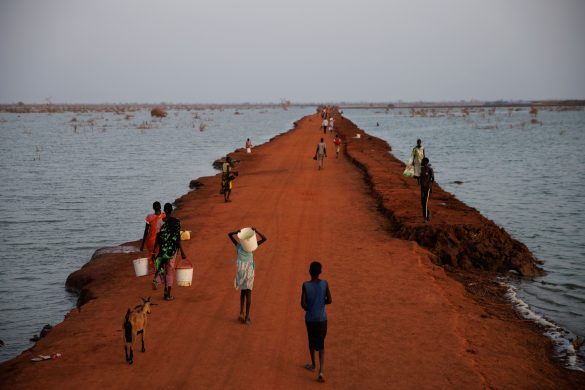World Bank President Paul Wolfowitz arrived in Islamabad, Pakistan, Saturday (14. August) to begin his first visit to South Asia as head of the global development institution.
South Asia is a growing economic presence on the global map, but remains home to more than a quarter of the world’s poor people. While it has made rapid strides in some areas, its development challenges remain significant. Wolfowitzs visit is likely to focus on education, women’s issues, and rural infrastructure.
In Pakistan, India and Bangladesh over the coming week, Wolfowitz will meet the heads of government of the three countries, other senior ministers and officials, and representatives of business, women and youth to gain a first-hand insight into how the Bank can best support these countries achieve their development goals. His first meeting in Islamabad was with a group of civil society leaders.
The World Bank President will also visit some rural areas to interact directly with communities, especially womens groups, to learn how they have risen out of poverty when given a chance to participate in decision making affecting their lives.
At Islamabad airport Wolfowitz said: – Pakistan set itself on a course of economic reform about five years ago and you have sustained this course with real discipline and with real results. I am eager to learn more and to see first-hand how these reforms are beginning to make a difference for the people of Pakistan and especially your poorest citizens – and most especially for Pakistani women and children.
– I have been told particularly about gains in education, and a new hope that girls are attending schools in greater numbers.
Wolfowitz said even with these early successes, the challenges were huge.
– I am here to see that the World Bank is offering you its very best support and to see if there are any things we can do even better, he noted.
The reform program in Pakistan has seen this country of over 140 million people turn around a deteriorating macroeconomic situation to one showing rapid improvements.
In 2004-05 the countrys GDP (gross domestic product) grew by more than eight percent. Public debt has fallen to about 60 percent of GDP from almost 90 percent in 2000-2001.
Pakistan is the World Banks fifth-largest borrower. The main focus of the Banks work in support of Pakistan’s reform agenda is to promote sustained growth through improved competitiveness and governance and to ensure that poor people, particularly vulnerable groups like women, have access to social services and opportunities to improve their lives.
During his Pakistan trip, Wolfowitz will hear about the Banks work in support of education reforms. These have to date been most successful in the countrys most populous province, Punjab.
In Pakistan today, only about half of the 20 million children, aged between five and nine years, go to school. Illiteracy is high – half the adult population cannot read or write. In all, two thirds of Pakistani women are illiterate.
In Punjab, a series of World Bank loans – worth in total about 300 million US dollar – have supported the provinces education sector program, provided free textbooks, scholarships for girls and funding for school reconstruction.
The results were obvious within one year of the start of the program:
– a 13 percent increase in primary school enrolment at government schools;
– a 23 percent rise in girls enrolment in grades 6 to 8 in low-literacy districts, where girls were offered a stipend to go to school.
Overall, one million more children enrolled in Punjabs schools since the launch of the reform program. That was one of the findings of a recent household survey which showed that net primary school enrolment rates jumped from 45 percent in 2001 to 58 percent in 2004-2005.
Another key area of Bank support to Pakistan has been to the countrys bid to break the cycle of poverty among the rural and urban poor through its Pakistan Poverty Alleviation Fund.
Set up by the government in 1997, and funded by two credits totaling 330 million dollar from the Bank, the project has reached 40.000 communities through micro credit loans and community-driven small-scale infrastructure projects.
(World Bank loans to Pakistan were all together 950 million dollar (henved 6 mia. DKR) in the 2005 financial year)
The project – now in its second phase – has already been successful in helping millions of poor:
– More than 600.000 micro-credit loans have been granted (almost half of which went to women). In the first half of the 2005 financial year, 54 percent of the borrowers were women;
– More than 8.000 community infrastructure projects of which 5.500 have been completed – covering such areas as water supply, sanitation, irrigation channels, and rural roads. All completed projects are being effectively maintained by the local communities;
– More than 100.000 people trained (more than 90.000 were community members of which 40 percent were women).
A Gallup Pakistan study found clear pay-offs for families which had taken out micro-credit loans. On average, a micro-credit loan resulted in families not only improving their income, but also their personal and business assets, housing facilities and their social status – especially in the case of women.
Kilde: www.worldbank.org















